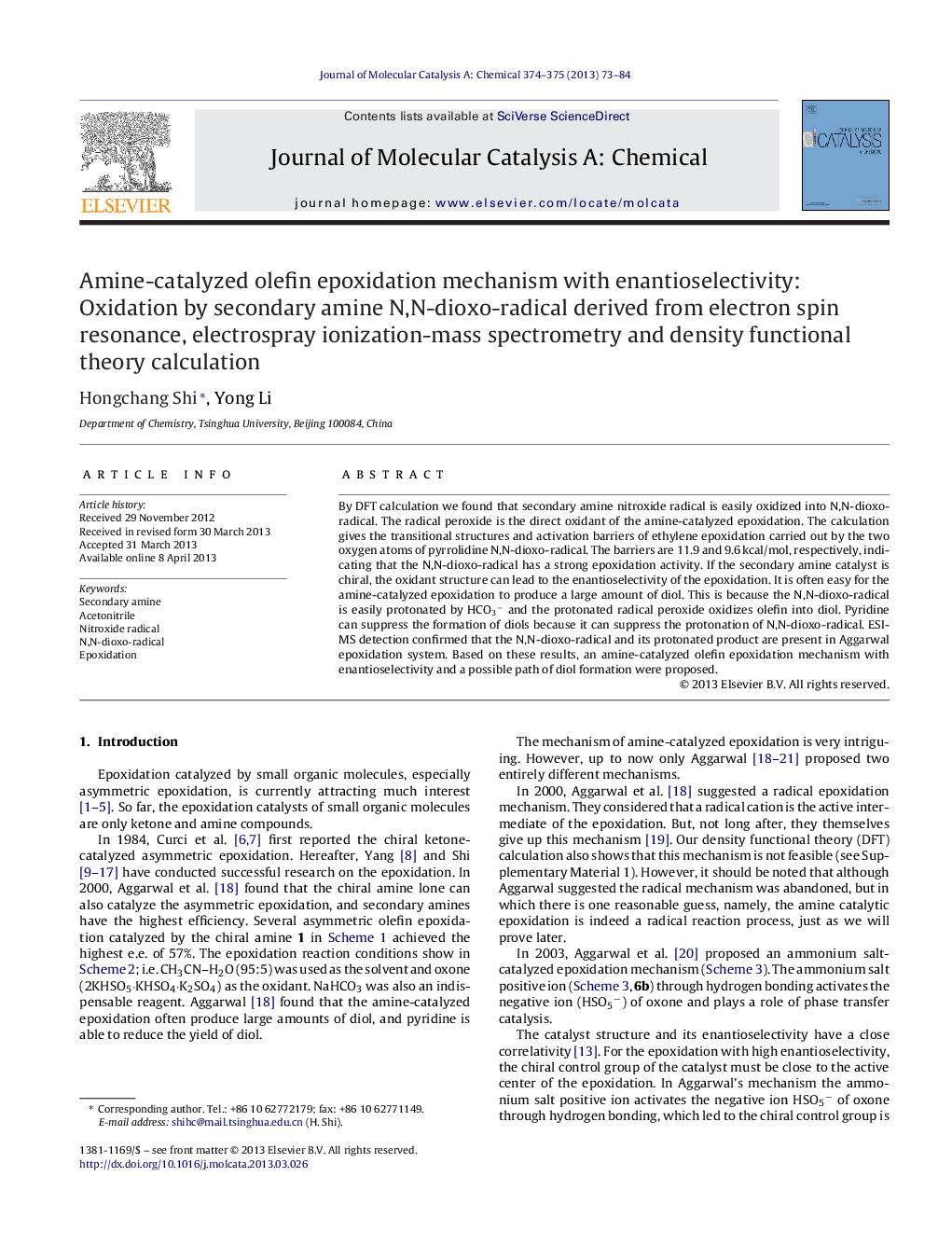| Article ID | Journal | Published Year | Pages | File Type |
|---|---|---|---|---|
| 65749 | Journal of Molecular Catalysis A: Chemical | 2013 | 12 Pages |
•The secondary amine N,N-dioxo-radical is the direct oxidant of the epoxidation.•Secondary amine N,N-dioxo radicals were observed by ESI-MS.•The N,N-dioxo-radical structure can lead to the enantioselectivity of epoxidation.•Protonated N,N-dioxo-radical can oxidize olefin into diol.•Pyridine can suppress the protonation of N,N-dioxo-radical.
By DFT calculation we found that secondary amine nitroxide radical is easily oxidized into N,N-dioxo-radical. The radical peroxide is the direct oxidant of the amine-catalyzed epoxidation. The calculation gives the transitional structures and activation barriers of ethylene epoxidation carried out by the two oxygen atoms of pyrrolidine N,N-dioxo-radical. The barriers are 11.9 and 9.6 kcal/mol, respectively, indicating that the N,N-dioxo-radical has a strong epoxidation activity. If the secondary amine catalyst is chiral, the oxidant structure can lead to the enantioselectivity of the epoxidation. It is often easy for the amine-catalyzed epoxidation to produce a large amount of diol. This is because the N,N-dioxo-radical is easily protonated by HCO3− and the protonated radical peroxide oxidizes olefin into diol. Pyridine can suppress the formation of diols because it can suppress the protonation of N,N-dioxo-radical. ESI-MS detection confirmed that the N,N-dioxo-radical and its protonated product are present in Aggarwal epoxidation system. Based on these results, an amine-catalyzed olefin epoxidation mechanism with enantioselectivity and a possible path of diol formation were proposed.
Graphical abstractFigure optionsDownload full-size imageDownload high-quality image (127 K)Download as PowerPoint slide
